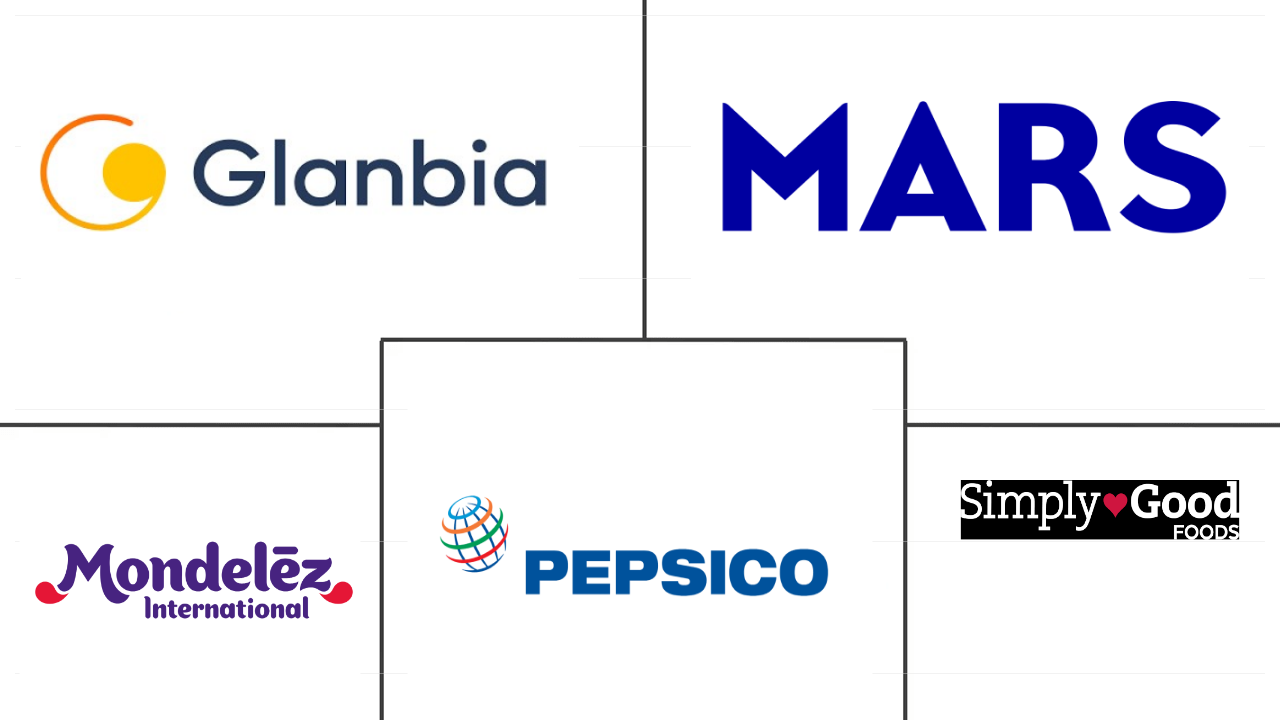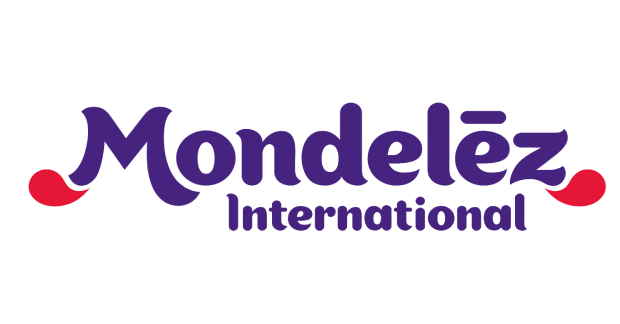Market Size of north america protein bar Industry
| Icons | Lable | Value |
|---|---|---|
|
|
Study Period | 2018 - 2030 |
|
|
Market Size (2024) | USD 6.47 Billion |
|
|
Market Size (2030) | USD 11.33 Billion |
|
|
Largest Share by Distribution Channel | Supermarket/Hypermarket |
|
|
CAGR (2024 - 2030) | 9.79 % |
|
|
Largest Share by Country | United States |
|
|
Market Concentration | Low |
Major Players |
||

|
||
|
*Disclaimer: Major Players sorted in no particular order |
North America Protein Bars Market Analysis
The North America Protein Bar Market size is estimated at 6.47 billion USD in 2024, and is expected to reach 11.33 billion USD by 2030, growing at a CAGR of 9.79% during the forecast period (2024-2030).
6.47 Billion
Market Size in 2024 (USD)
11.33 Billion
Market Size in 2030 (USD)
5.47 %
CAGR (2018-2023)
9.79 %
CAGR (2024-2030)
Largest Segment by Distribution Channel
40.52 %
value share, Supermarket/Hypermarket, 2023
The product assortment and shelf space in supermarkets allow consumers to compare the products, which has emerged as one of the major factors driving segmental growth.
Largest Segment by Country
87.23 %
value share, United States, 2023
Adoption of many innovative products and the rising preference for on-the-go consumption in the United States made it a larger country in the market during the study period.
Fastest-growing Segment by Distribution Channel
11.91 %
Projected CAGR, Online Retail Store, 2024-2030
The ability to use online marketing tools to target new customers and website analysis tools to gain insight into regional product-specific consumers is driving the segment.
Fastest-growing Segment by Country
10.02 %
Projected CAGR, United States, 2024-2030
The increasing number of health-conscious consumers in Mexico are buying protein bars due to their high nutrition levels, thus driving the segment's growth in the market.
Leading Market Player
16.36 %
market share, Mondelēz International Inc., 2022

An extensive range of product offerings and its main focus on taste and nutritional profiles based on consumer preferences support Mondelēz in the market studied.
Supermarkets/hypermarkets led the market due to the wide availability of different brands, expected to register a Y-o-Y growth of 7.50% over 2023-2024
- Supermarkets and hypermarkets are the leading distribution channels for protein bars in the region. Sales through supermarkets and hypermarkets are anticipated to record a CAGR of 6.86% from 2023 to 2030. Consumers prefer buying protein bars, mainly from supermarkets and hypermarkets, as they get discount coupons for bulk shopping in supermarkets.
- Convenience stores are the second most widely preferred distribution channel after supermarkets and hypermarkets for purchasing protein bars in the region. In 2023, the sales value of convenience stores increased by 7.32% compared to the previous year, 2022. The broader reach and easy access to private-label brands drive consumer preference for convenience stores over other retail channels.
- Major brands like Clif provide various types of protein bars and are a category leader in the sales of alternative snacks through the convenience stores channel, with an ACV (all commodity volume) of 80.7% and a nearly 13% increase in sales in 2022 compared to the previous year. Also, in 2021, the QuikTrip convenience store chain added Barebells protein bars in its more than 850 stores in 11 states across the United States.
- The online channel is expected to be the fastest-growing retail channel for protein bar sales. The sales value of protein bars through this segment is anticipated to grow by 26.51% in 2025 compared to 2022. The evolving role of online channels in protein bar purchases is influenced by the increasing number of internet users. In 2022, 93.4% of the population in the region accessed the internet. Among regional countries, the highest shares of internet users were recorded in Canada (96.5%) and the United States (92%).
With two in three US consumers seeking protein bars that are more calorie-controlled and have immune-friendly ingredients, the country leads the North American market with a 95% share
- The protein bar market in North America witnessed a growth of 7.9% by value in 2023 compared to 2022. The growth is mainly attributed to the rising awareness of consumers regarding better health. Since protein bars provide a significant volume of protein (10-20 grams), vitamin B, and 150-200 calories, they are highly preferred by fitness enthusiasts among the North American population.
- Among North American countries, the United States is considered the largest country in terms of the consumption of protein bars, as consumers here are majorly adopting exercise, outdoor games, and other adventure sports to maintain good health. In 2023, 64.19 million people in the United States were members of a gym or health club. With the growing awareness about good health, consumers are increasingly preferring the consumption of low-fat products, oil-free products, etc. This aspect has majorly shifted consumer density toward the protein bar market in the North American region.
- In 2023, the Canadian protein bar market was projected to be the fastest-growing segment, with a CAGR of 3.21%. This was due to the changing behavior of consumers toward the snack bar market. In Canada, consumers were mainly using protein bars as a ready-to-go meal. In addition, protein bar producers are offering their products in varied price ranges (low, medium, and high), which is further driving sales. The average selling price of a snack bar was USD 1.33 in 2023.
- During the forecast period (2024-2030), it is assumed that this industry is expected to grow by 6.61% due to the rising demand for better health among consumers. It is also expected that the producers of protein bars will introduce innovative flavors and unique packaging to expand their consumer base.
North America Protein Bar Industry Segmentation North America Protein Bars Industry Segmentation
Convenience Store, Online Retail Store, Supermarket/Hypermarket, Others are covered as segments by Distribution Channel. Canada, Mexico, United States are covered as segments by Country.
- Supermarkets and hypermarkets are the leading distribution channels for protein bars in the region. Sales through supermarkets and hypermarkets are anticipated to record a CAGR of 6.86% from 2023 to 2030. Consumers prefer buying protein bars, mainly from supermarkets and hypermarkets, as they get discount coupons for bulk shopping in supermarkets.
- Convenience stores are the second most widely preferred distribution channel after supermarkets and hypermarkets for purchasing protein bars in the region. In 2023, the sales value of convenience stores increased by 7.32% compared to the previous year, 2022. The broader reach and easy access to private-label brands drive consumer preference for convenience stores over other retail channels.
- Major brands like Clif provide various types of protein bars and are a category leader in the sales of alternative snacks through the convenience stores channel, with an ACV (all commodity volume) of 80.7% and a nearly 13% increase in sales in 2022 compared to the previous year. Also, in 2021, the QuikTrip convenience store chain added Barebells protein bars in its more than 850 stores in 11 states across the United States.
- The online channel is expected to be the fastest-growing retail channel for protein bar sales. The sales value of protein bars through this segment is anticipated to grow by 26.51% in 2025 compared to 2022. The evolving role of online channels in protein bar purchases is influenced by the increasing number of internet users. In 2022, 93.4% of the population in the region accessed the internet. Among regional countries, the highest shares of internet users were recorded in Canada (96.5%) and the United States (92%).
| Distribution Channel | |
| Convenience Store | |
| Online Retail Store | |
| Supermarket/Hypermarket | |
| Others |
| Country | |
| Canada | |
| Mexico | |
| United States | |
| Rest of North America |
North America Protein Bar Market Size Summary
The North America protein bar market is experiencing significant growth, driven by increasing consumer awareness of health and fitness. Supermarkets and hypermarkets dominate the distribution channels, offering consumers the advantage of discount coupons for bulk purchases. Convenience stores also play a crucial role, with their broader reach and easy access to private-label brands attracting consumers. The online channel is emerging as the fastest-growing retail segment, fueled by the rising number of internet users in the region. The market's expansion is further supported by the growing popularity of protein bars among fitness enthusiasts, particularly in the United States, where a substantial portion of the population engages in gym and outdoor activities.
The market is characterized by a diverse range of brands and products, catering to varying consumer preferences and price points. Brand loyalty is a significant factor, with consumers showing a preference for established brands like Crunch Plus, Nature Valley, and ProBar. The Canadian market is noted for its rapid growth, with protein bars being increasingly used as convenient meal replacements. The introduction of innovative flavors and unique packaging is expected to further drive market expansion. The fragmented nature of the market sees major players like Glanbia PLC, Mars Incorporated, and PepsiCo Inc. holding substantial shares, while new product launches continue to enhance consumer offerings.
North America Protein Bar Market Size - Table of Contents
-
1. MARKET SEGMENTATION (includes market size in Value in USD and Volume, Forecasts up to 2030 and analysis of growth prospects)
-
1.1 Distribution Channel
-
1.1.1 Convenience Store
-
1.1.2 Online Retail Store
-
1.1.3 Supermarket/Hypermarket
-
1.1.4 Others
-
-
1.2 Country
-
1.2.1 Canada
-
1.2.2 Mexico
-
1.2.3 United States
-
1.2.4 Rest of North America
-
-
North America Protein Bar Market Size FAQs
How big is the North America Protein Bar Market?
The North America Protein Bar Market size is expected to reach USD 6.47 billion in 2024 and grow at a CAGR of 9.79% to reach USD 11.33 billion by 2030.
What is the current North America Protein Bar Market size?
In 2024, the North America Protein Bar Market size is expected to reach USD 6.47 billion.

